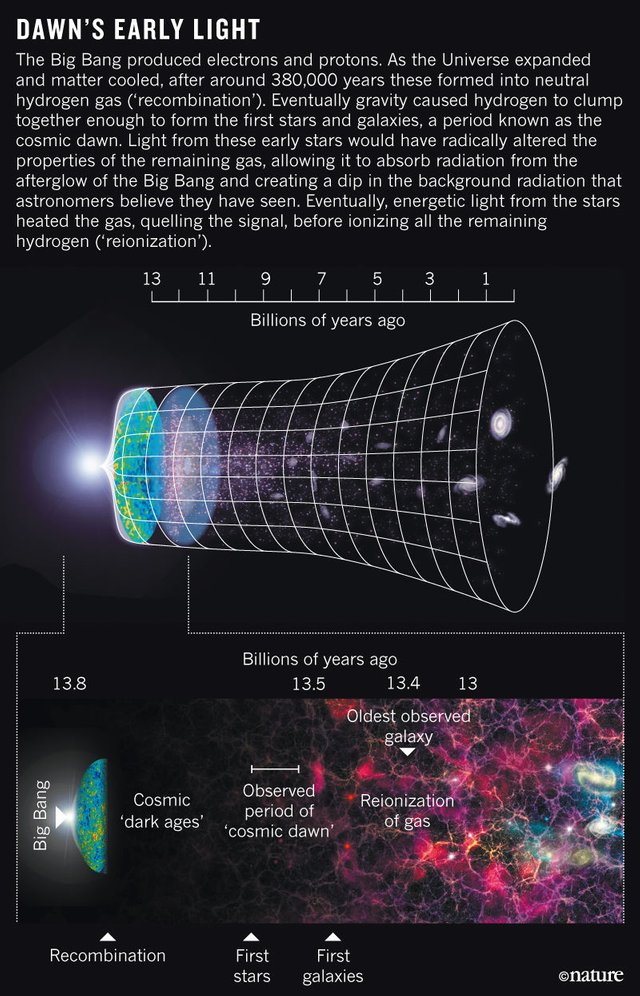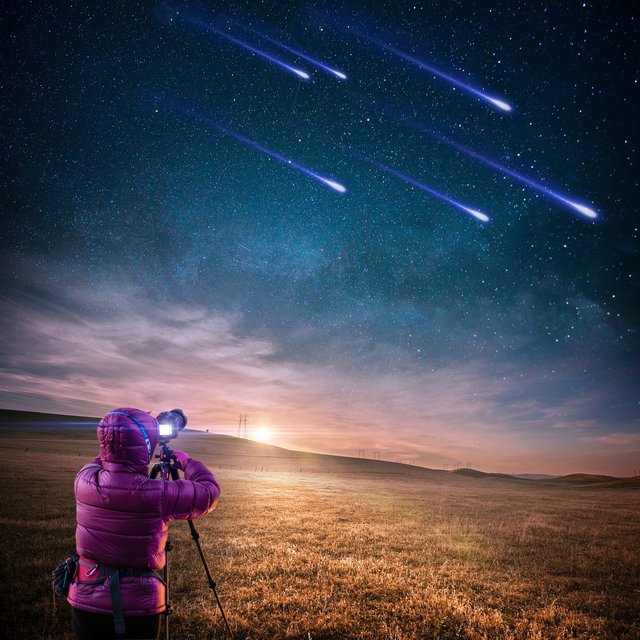Astronomers DiscoVered light froM firsT stArs of the uniVerse 🌟
A signal in the radio waves coming from the sky of the southern hemisphere bears the signature of the light emitted by the first stars about 180 million years after the big bang. The characteristics of this signal could also demonstrate a primordial interaction between ordinary matter and dark matter.
Cosmologists call it cosmic dawn and it is the period during which the first stars of the universe were formed. Now a study published in "Nature" has identified a signal coming from this primeval era of the cosmos: it dates back to 180 million years after the big bang. And another study published in the same magazine suggested that the detected signal bears the imprint of a fundamental interaction, that between ordinary matter and dark matter.
Researchers already have a fairly clear idea of how things went in the primordial age of the universe. For astrophysical models, the first stars were of enormous size, of blue color and of short life. The ultraviolet component of those stars penetrated the primordial gas composed of atomic hydrogen - composed of a proton and an electron - which at that time constituted most of the matter of the universe; in particular, UV radiation excited the electronic states of hydrogen, each of which has a well-defined energy.
In general, an atom can absorb a photon with a specific wavelength (and therefore with a specific energy) and in this way it can get excited (ie bring an electron into a state of greater energy than the starting state), in a process that is called "electronic transition"; afterwards the same atom can reissue a photon in the inverse process, that is, it can de-energize (ie bring the electron back to a lower energy state).

Credits
Returning to the discovery published in "Nature", one particular The electronic transition of hydrogen, called the "21 centimeter line", was altered by the photons of the ultraviolet radiation of the first stars and also interacted with the photons of the background cosmic radiation, ie the electromagnetic radiation in microwaves that we can detect today and consider as the echo of the big bang occurred 13.8 billion years ago. This interaction has impressed "a signature" in the radio spectrum of the radiation that is observed today in the sky at frequencies below 200 megahertz.
In the first article , Judd Bowman of the University of Arizona and colleagues have shown to have detected this characteristic signal at 78 megahertz. The discovery was made possible thanks to a special instrument, called a radio spectrometer, of the CSIRO Observatory in Western Australia; as part of the Experiment to Detect the Global EoR Signature (EDGES) project, the Bowman group measured the radio spectrum of all astronomical signals received from most of the sky in the southern hemisphere and sought small power changes as a function of frequency.
"Finding this tiny signal has opened a new window on the primordial universe," commented Bowman. "Telescopes can not see far enough to be able to directly detect images of such ancient stars, but indirectly in the spectrum we have detected radio waves coming from space when they are turned on".
In the second article , Rennan Barkana of the University of Tel Aviv, in Israel, considers some characteristics of the detected radiation. They largely agree with the theoretical predictions, but show that the radiation absorption process was more intense than expected. This indicates that the primordial hydrogen gas was colder than previously estimated. This difference can have two motivations.
The first is that the theoretical works of astrophysicists have so far overlooked something significant. The second is that hydrogen has cooled due to the interaction with something even colder: dark matter. According to Barkana, on the basis of the observed signal we can deduce that the particles of dark matter, still hypothetical, have a mass equal to some times the mass of the proton.
A Short Video From The Guardian
If the idea of Barkana is confirmed, explained Bowman, then scientists will have learned something new and fundamental about the mysterious dark matter that makes up 85 percent of the matter in the universe; in that case, moreover, the Tel Aviv researcher's hypothesis would represent a first excursion into a new territory: physics beyond the standard model of particles.
References For Further Reading
Big Thanks to @enginewitty for this cool Banner


great job by astronomers.
thanks for share with us.
This comment has received a 0.08 % upvote from @speedvoter thanks to: @mahadihasanzim.
You’ve been upvoted by TeamMalaysia community. Here are trending posts by other TeamMalaysia authors at http://steemit.com/trending/teammalaysia
To support the growth of TeamMalaysia Follow our upvotes by using steemauto.com and follow trail of @myach
Vote TeamMalaysia witness bitrocker2020 using this link vote for witness
hmm great